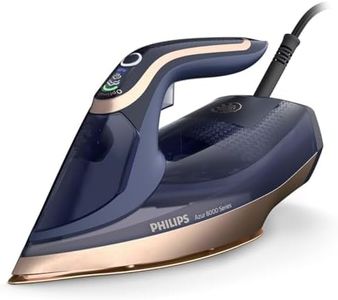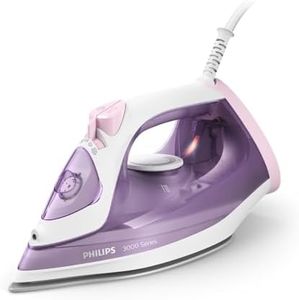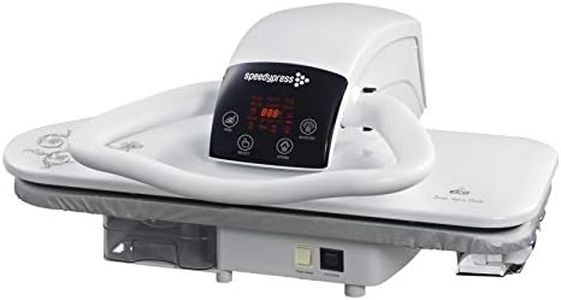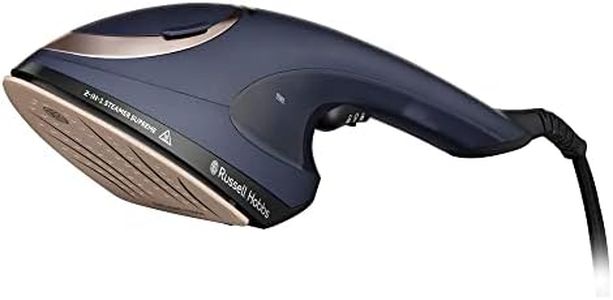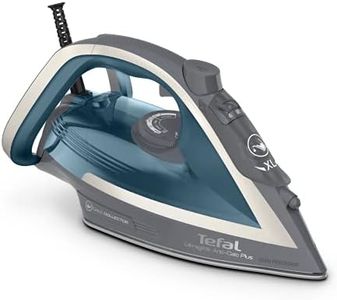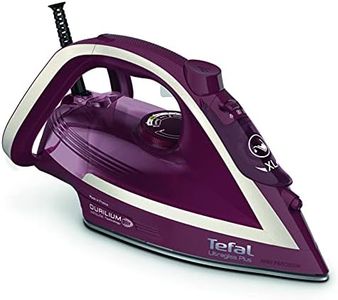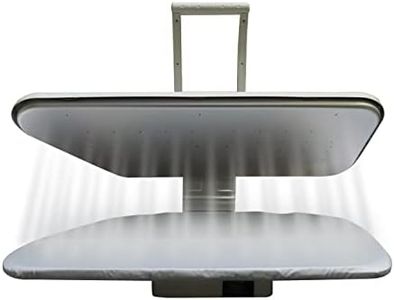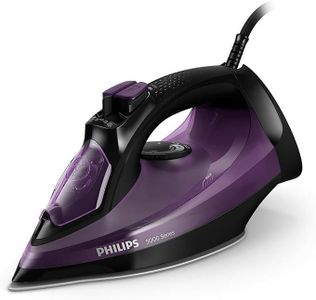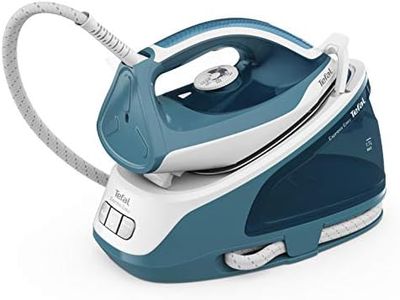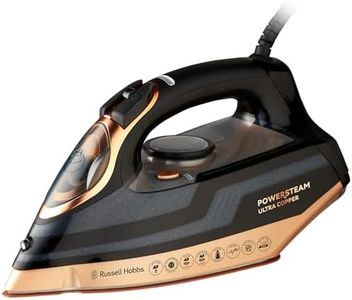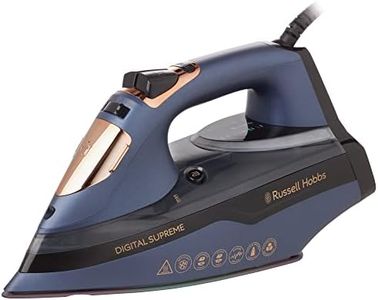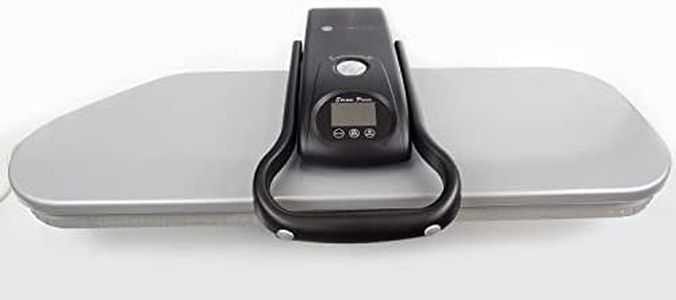We Use CookiesWe use cookies to enhance the security, performance,
functionality and for analytical and promotional activities. By continuing to browse this site you
are agreeing to our privacy policy
10 Best Steam Press Irons
From leading brands and best sellers available on the web.Buying Guide for the Best Steam Press Irons
Choosing a steam press iron is all about making your ironing faster, easier, and more effective. Think of a steam press as a large ironing surface that lets you press garments with less effort and more consistency, whether you handle dress shirts, linens, or large fabric items. To find the right one, you need to understand the main specifications that affect speed, performance, ease of use, and general suitability for the types of fabrics and garments you care for most often.Pressing Surface SizeThe pressing surface size refers to the total area of the heated plate that comes into contact with your clothes. Larger surfaces help you cover more fabric in one go, making them ideal for sheets, curtains, and bulk ironing. Smaller surfaces are easier to store and handle, and can be more precise for smaller items or delicate clothes. If you mostly deal with large items, choose a larger surface; if you're short on space or only press small clothes, a compact size will suit you better.
Steam Output and ControlsSteam output is the amount of steam the press generates to loosen fabric fibers, making ironing easier and more effective. High steam output can cut down on stubborn wrinkles and is excellent for thicker fabrics like denim or linen, while a gentler steam is better for delicate materials. Adjustable steam controls enable you to tailor the steam to the fabric type; look for presses that let you choose varying levels of steam for more flexibility. Consider what kinds of garments you handle regularly—heavier fabrics need more steam, delicate fabrics need less.
Temperature RangeThe temperature range determines how hot the press can get, which matters because different fabrics need different heat levels. Cotton and linen require high heat, while silk and synthetics need lower temperatures. A wide temperature range means more versatility and the ability to safely press a broader range of fabrics. Look for easy-to-read settings so you can quickly dial in the right temperature for whatever you’re pressing.
Heating TimeHeating time is the amount of time it takes for the steam press to get hot enough to use. Shorter heating times save you waiting and make ironing more convenient, especially if you have last-minute needs. If you often iron in a hurry, look for a quick heating model; if you plan longer sessions and preparation time isn’t an issue, a longer heating time won’t be as much of a drawback.
Water Tank CapacityThe water tank holds the water that is turned into steam during use. A larger tank means you can iron longer without refilling, which is helpful for big loads of laundry. However, bigger tanks make the unit heavier. Think about how much ironing you do in one session—if it's only a few garments, a smaller tank should suffice; for regular, heavy-duty ironing, a larger tank will mean fewer interruptions.
Weight and PortabilityWeight and portability matter if you need to move your steam press often or store it away when not in use. Lighter models are easier to lift and store but might offer less stability. Heavier models are sturdy and stay put, but can be awkward if you lack a permanent ironing station. Consider your storage space and whether the press will stay in one place or need to be put away after each use.
Safety FeaturesSafety features like auto shut-off, locking handles, and heat resistant bases help prevent accidents and protect your home. Auto shut-off turns the press off if it’s left idle, reducing the risk of fire. Locking handles make transport safer, while heat-resistant bases prevent damage to surfaces when storing the unit. These features are especially important if you have kids, pets, or might get distracted during ironing.
